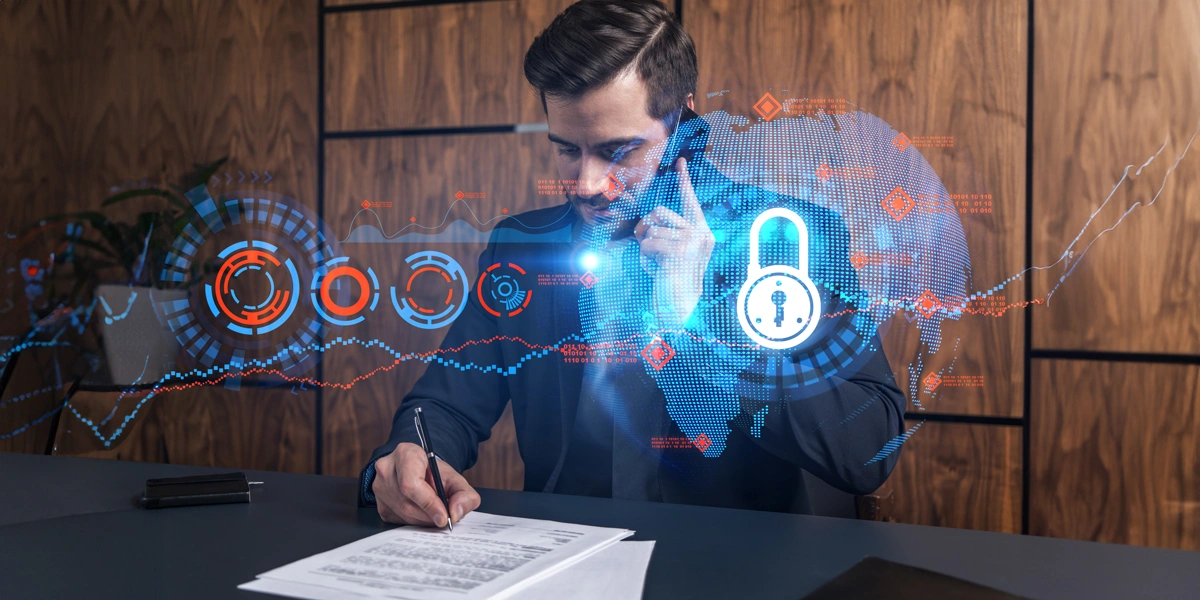
In the digital landscape, trust and security are paramount for businesses operating in the online sphere. As organisations increasingly rely on cloud service providers to store and manage sensitive data, ensuring the safety and integrity of this information has become a top priority. Enter SOC 2 compliance – the new gold standard in digital trust. In this article, we'll delve into what SOC 2 compliance entails, its significance in the realm of cybersecurity, and how organisations can achieve and maintain compliance to instill trust among their customers and stakeholders.
Understanding SOC 2 Compliance
SOC 2, short for Service Organization Control 2, is a framework developed by the American Institute of Certified Public Accountants (AICPA) to assess the security, availability, processing integrity, confidentiality, and privacy of data stored and processed by service providers. Unlike other compliance standards, such as SOC 1 (which focuses on financial reporting controls), SOC 2 is specifically designed for technology and cloud computing companies.
The framework consists of five trust service criteria (TSC)—security, availability, processing integrity, confidentiality, and privacy—against which service organisations are evaluated. To achieve SOC 2 compliance, organizations must undergo a rigorous audit conducted by an independent third-party auditor. This audit assesses the design and effectiveness of the organization's controls and processes related to the TSCs.
Significance of SOC 2 Compliance
Achieving SOC 2 compliance demonstrates an organization's commitment to maintaining the highest standards of security and data protection. In today's digital age, where data breaches and cyber threats are increasingly prevalent, SOC 2 compliance serves as a testament to an organization's dedication to safeguarding the confidentiality, integrity, and availability of its systems and data.
Moreover, SOC 2 compliance assures customers, partners, and other stakeholders that the organisation has implemented robust controls and safeguards to protect their sensitive information. This assurance is especially critical for businesses operating in regulated industries, such as healthcare, finance, and technology, where compliance with data protection regulations is mandatory.
Achieving and Maintaining SOC 2 Compliance
Achieving and maintaining SOC 2 compliance requires a comprehensive approach to security and risk management. Here are some key steps organisations can take to ensure compliance:
1. Conduct a Readiness Assessment: Before undergoing a SOC 2 audit, organisations should conduct a readiness assessment to identify gaps and areas for improvement in their existing controls and processes.
2. Implement Security Controls: Organisations must implement security controls and measures to protect against unauthorised access, data breaches, and other security threats. This may include implementing firewalls, encryption, access controls, and security monitoring systems.
3. Develop Policies and Procedures: Establishing clear policies and procedures for data handling, access management, incident response, and other security-related activities is essential for SOC 2 compliance.
4. Train Employees: Providing training and awareness programs to employees on security best practices, data handling policies, and their roles and responsibilities in maintaining security is crucial for compliance.
5. Conduct Regular Audits and Assessments: Regularly reviewing and testing security controls, conducting internal audits, and performing vulnerability assessments can help organisations identify and address security weaknesses proactively.
By following these steps and investing in robust security measures and practices, organisations can achieve and maintain SOC 2 compliance, thereby enhancing trust and confidence among their customers and stakeholders.
The Significance of SOC 2 Compliance: A Business Perspective
In the realm of Managed Service Providers (MSPs) such as eMudhra offering managed PKI services, achieving SOC 2 compliance goes beyond mere adherence to standards; it reshapes the perception of the business within the market. SOC 2 compliance serves as a hallmark of trustworthiness and security, elevating the MSP's reputation and fostering client confidence. This enhanced trust can lead to bolstered client retention rates, a pivotal metric in the MSP business model.
Moreover, SOC 2 compliance acts as a shield against the detrimental effects of data breaches. Non-compliant MSPs risk severe reputational damage, client attrition, and legal repercussions in the event of a breach. Conversely, SOC 2 compliance mitigates these risks, ensuring business continuity and stability. It positions the MSP as a frontrunner in security practices, attracting discerning clients who prioritise robust data protection measures. In essence, SOC 2 compliance transcends mere benchmark fulfilment; it lays the foundation for a resilient and reputable business poised to thrive in a landscape where data security reigns supreme.
Identity and SOC Compliance
Identity is central to SOC 2 compliance, particularly in today's landscape where individuals serve as the primary perimeter for businesses, especially those operating with remote teams. It's imperative to implement measures ensuring that authorised individuals have appropriate access to data and company resources at all times.
Businesses already monitor and manage access to data and services, establishing a robust identity framework that aligns with SOC 2 compliance requirements. For instance, audit logs routinely provided to auditors include details on the protection of administrative accounts and credentials, as well as user access to software and servers, demonstrating a foundation for SOC 2 compliance.
Furthermore, ensuring the security of applications and underlying infrastructure is crucial for software companies, and SOC 2 guidelines aid in this endeavour by establishing standards for software development security. Regular audit logs play a vital role in meeting audit requirements while affirming the safety and integrity of data.
eMudhra: Your Trusted Ally in the Digital Era
SOC 2 compliance is a critical component of building digital trust in today's interconnected world. Choosing to partner with eMudhra signifies aligning with a pioneer in secure and dependable data management solutions. In an ever-evolving digital landscape, we remain at the forefront of innovation, consistently striving to advance towards a safer digital environment for both our clients and their stakeholders.
Contact us to learn how eMudhra adheres to SOC compliance guidelines and offers identity and access management solutions to support businesses in achieving their compliance objectives.
